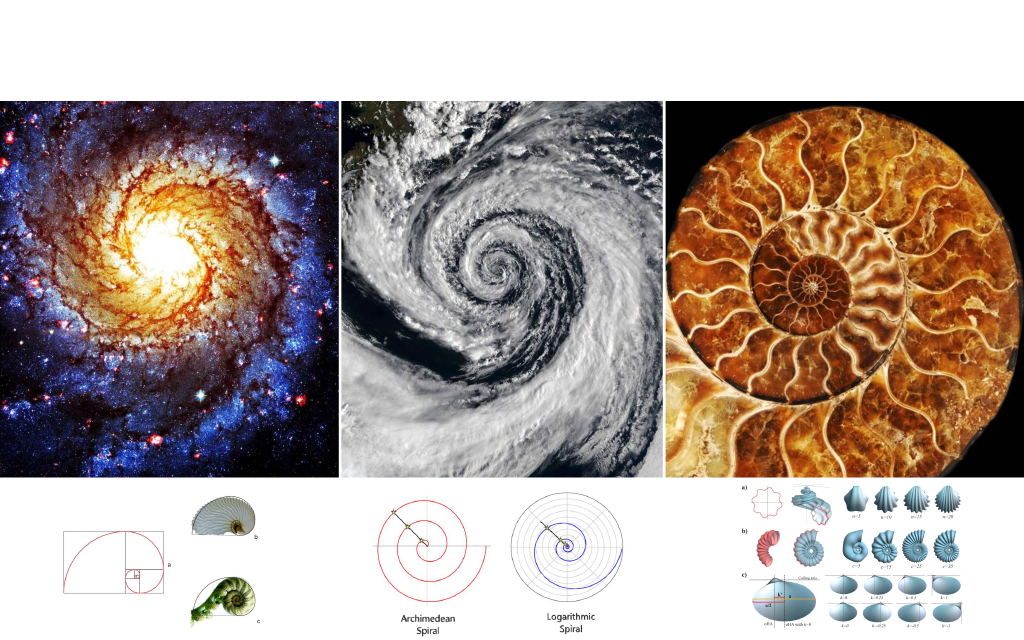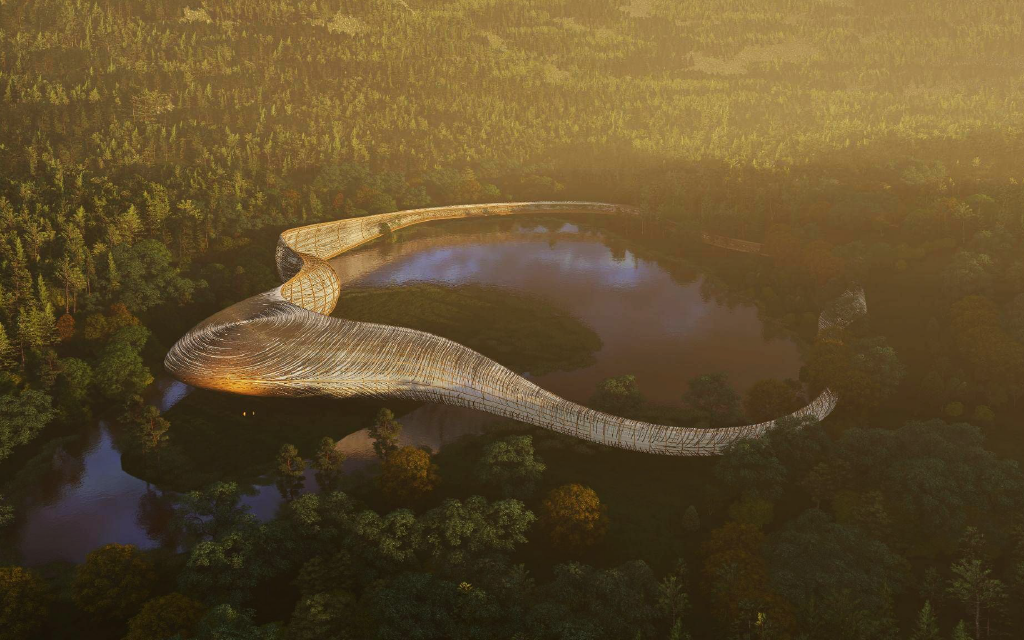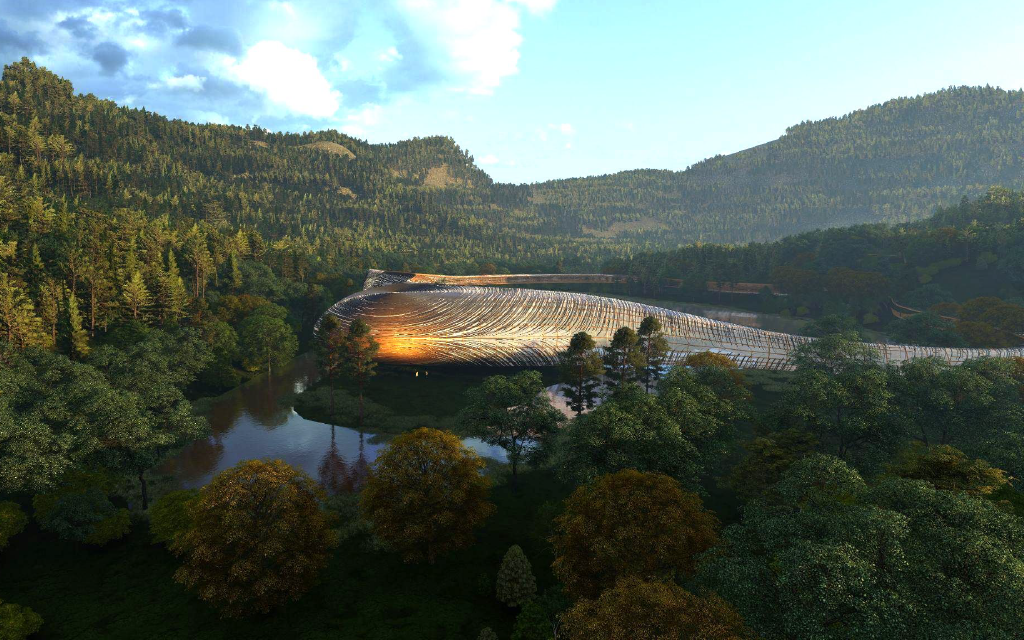Ascending Gallery is a Wildlife conservation Museum to raise awareness about wild animal species extinction. This project is a dedicated exploration of mathematical surfaces within architecture, emphasizing their integration into natural landscapes. Set in the beautiful natural setting in Pozzuoli, Naples, Italy that served as a profound inspiration, the project delves into the intricate geometry of spirals found in nature, examining their mathematical rationale and the resulting implications for architectural design.

At its concept, the project seeks to embrace the surrounding environment harmoniously, envisioning a meandering path culminating in the museum’s central volume. Its overall form, which seems to emerge from the water and from the site itself, keeps the visitors in constant motion, a continuous movement further emphasized through the simulation of its skin.

Our research begins with a rigorous exploration of pure mathematical surfaces, performing a series of transformations to unlock their spatial potential. These initial explorations unfold as a catalog of mathematical surface morphologies, looking at how specific equations affect geometry directly. The applied transformations included cutting, modulating, elongating, spiralizing, deforming, opening, pinching, and flattening simple shapes. We then identified those equations that generated spiraling forms and combined them with other transforming equations to achieve the intended concept.



After identifying a suitable surface, it undergoes meticulous adjustments to integrate it seamlessly into the designated location. The resulting surface serves as the basis for both the structural framework and the attractive visual skin, which is inspired by simulating water flow.

One of the most important phases within the project consisted of the selection and manipulation of three basic mathematical surfaces, each designated for the primary skin, the path, and the interior ramp. The surfaces are thoroughly blended and modified to maintain an organic fit to the rest of the site. In particular, the lake plays a central role in the design strategy, serving as a focal point for the placement of the main surface, followed by the designation of points of interest around the lake. A carefully designed pathway is then conceived connecting these points and integrating geometric elements to provide spaces for resting and site-seeing. The resulting synthesis of the pathway and mathematical surface shows a primary gallery on the ground and an ascending gallery within the ramp, providing panoramic views of the entire site. The ramp, created to become the inner circulation of the main volume is also derived from a mathematical surface, finally connecting to the outer path, culminating in the cohesive blending of the various design components.






The ramp seamlessly transforms into a gallery space, strategically maximizing the surface area available for exhibitions. The internal spatial experience further emphasizes the relationship of the overall form to its context, primarily to the lake. The intricacies of the skin deformations, induced by the spiral effect, emerge from the central point of the spiral gallery. This dynamic interplay between forces and volumes, highlighted by a deep connection to nature, generates a compelling and aesthetically intriguing geometry at the core of the project. The culmination of these design elements positions the Ascending Gallery as an interesting exploration of mathematical surfaces, seamlessly blending mathematical precision with the organic beauty of the natural landscape.





